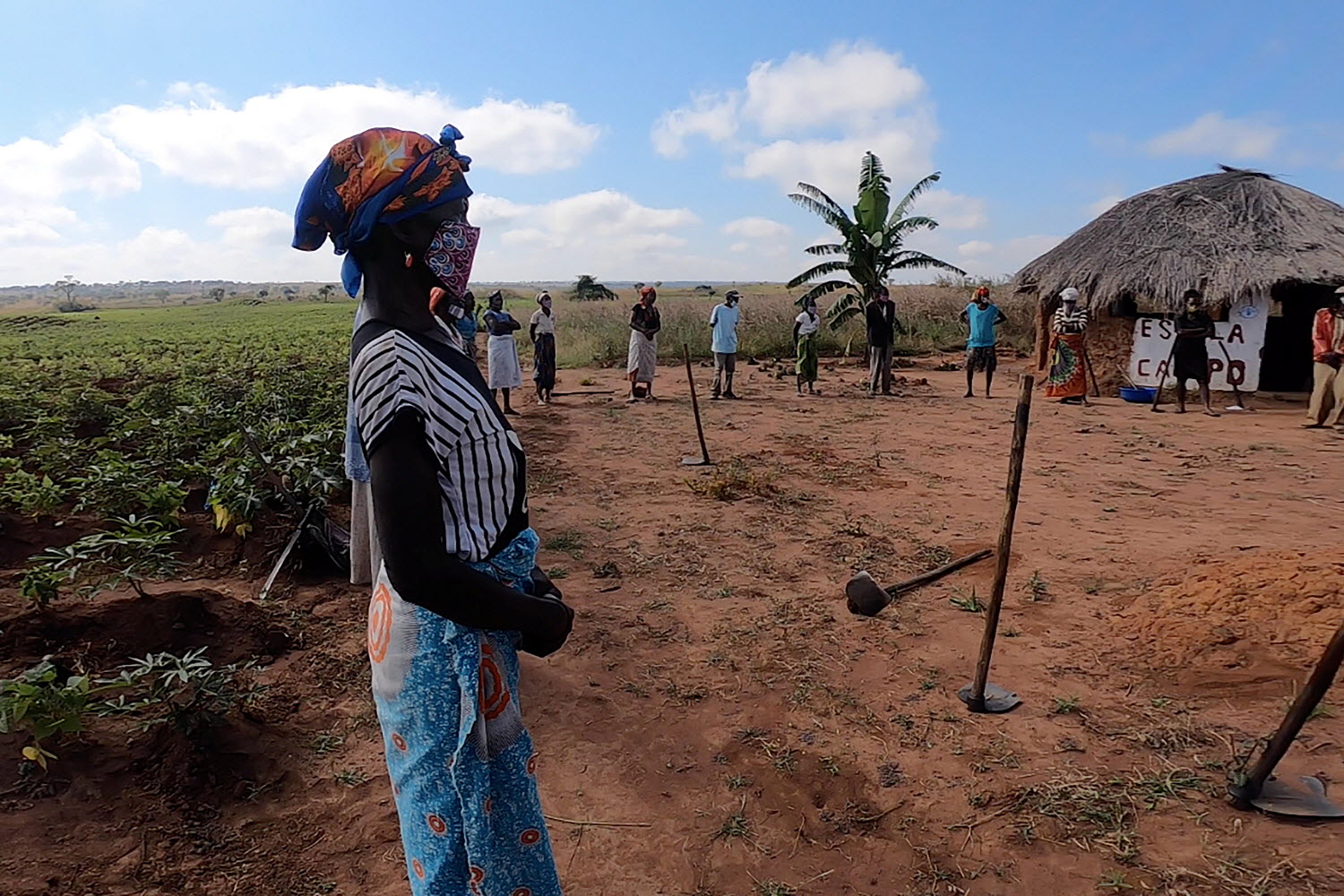
Integrated landscape management to reduce land degradation and enhance community resilience in Angola’s Miombo-Mopane dry forests
Country overview
Landscapes of Miombo and Mopane woodlands in Angola are exposed to varying degrees of land degradation due to the expansion of agricultural lands, unsustainable charcoal production and overgrazing in grassland areas. These trends are accelerated by population pressure, the associated demand for food and other ecosystem services, the expansion of settlements and climate change. Angola also faces land governance challenges, including issues of land tenure security and the need to accord environmental protection to important natural assets, particularly forests and water bodies in dryland areas.
How does the DSL-IP support Angola?
This project addresses some of these challenges through the adoption of SLM/SFM practices across selected landscapes in southern Angola, covering an area of at least 1.3 million hectares of Miombo and Mopane woodlands ecosystems.
Three general barriers block the realization of long-term goals outlined in government policies that relate to SLM/SFM and which could potentially generate both national and global environmental benefits for land-based ecosystem service:
- Barrier 1: Land degradation neutrality (LDN) governance frameworks (policy, regulatory, cross-sectoral coordination, decision-making tools and finance) are inadequate and ineffective, and consultation processes are not fully inclusive
- Barrier 2: Institutional mandates for land-use decision-making, capacity to engage stakeholders in collaborative and integrated management of landscapes are inadequate to deliver LDN
- Barrier 3: Ineffective land tenure governance creates disincentives for land improvement and reinforces social inequalities, including gender
The barriers will be addressed through three components to deliver the project objective:
- Component 1: focuses on the strengthening of the enabling environment and frameworks for LDN and the management of landscapes
- Component 2: will help Angola develop an integrated land-use planning (ILUP) for two selected landscapes and support the implementation of priority actions embedded in the plan, which will have a long-term sustainability goal. The landscapes constitute sub-basins of the Okavango and Cunene river basins and are located in Cuando Cubango and Cunene provinces. The development and implementation of the ILUPs will engage all relevant stakeholders and propose solutions that reconcile land-use goals under various sectors. Also, under the second Component, the project will focus on the development of sustainable value chains based on dryland products. The realization of specific SLM/SFM goals within multi-use landscapes will count on specialized rural advisory services conveyed by FAO, including the strengthening of land-users’ capacity for SLM/SFM through Farmer Field Schools (FFS) and Forest-Farm Facility (FFF) models – both being signature support programs of FAO. The project will equally strengthen and support the organization of Community Seed Banks (CSB) and various other actions linked to the sustainability of dryland value chains and local livelihoods.
- Component 3: will focus on strengthening national and landscape level assessment and monitoring for LDN, while facilitating national stakeholders’ participation in regional and global level initiatives under the DSL IP, which will improve Angola’s access to best practices and other capacity development resources for LDN and address barriers . Among them are the Regional Exchange Mechanism (REM), which involves 6 other countries in southern African that form part of the DSL IP’s Miombo Cluster. These countries share not only the Miombo-Mopane Woodlands ecoregion and various transboundary river basins, but also common challenges and the potential to jointly develop solutions.
The Global Environment Facility (GEF) allocated a budget of $5,359,633 from the GEF trust fund, plus additional $34,500,000
Project’s Target Contributions to GEF-7 Core Indicators
| Nr Core Indicator | Project Core Indicators | Expected results |
| 3 | Area of land restored (Hectares) | 9, 288 |
| 4 | Area of landscapes under improved practices (excluding protected areas) (Hectares) | 623,990 |
| Total area under improved management (Hectares) | 633,278 | |
| 6 | Greenhouse Gas Emissions Mitigated (metric tons of CO2e) | 1,047,911 tCO2e |
| 11 | Number of direct beneficiaries disaggregated by gender as co-benefit of GEF investment | At least 2,000 households (with approx. 10,000 dwellers): 65% are either female- or dual headed households |
The project is expected to positively contribute to the achievement, by 2030, of Angola’s LDN Target, which had been set in 2018 as a national commitment under the UNCCD. The national LDN Target has been since mainstreamed into the country’s climate change and national development policies and frameworks. More specifically, the project will pioneer the application of two important LDN principles in Angola: (1) the development and implementation of integrated land-use planning tools for the management of landscapes by embedding in the planning the neutrality mechanism; and (2) the application of the LDN response hierarchy in the active management of the landscapes. The latter implies the consistent and tracked management of land to avoid, reduce or reverse degradation.
